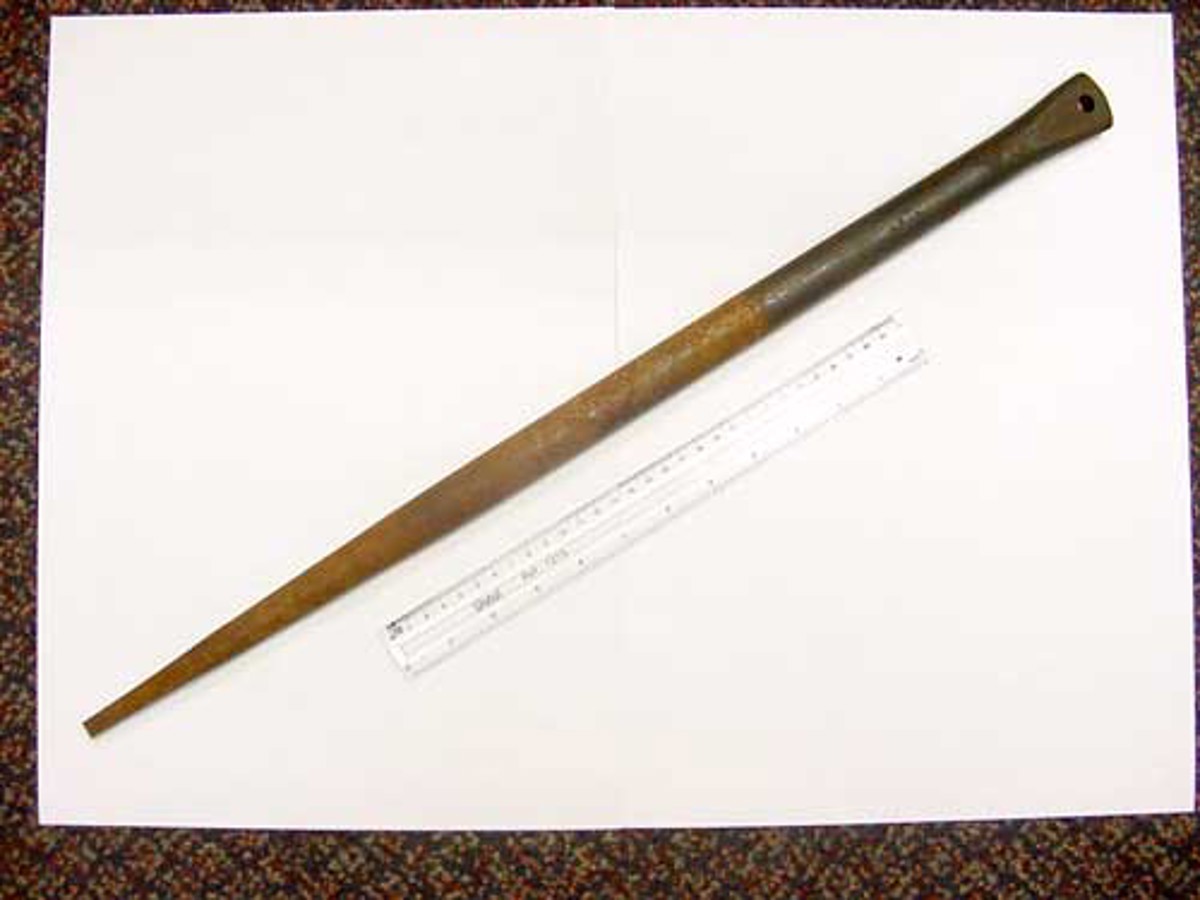Dropped objects from scaffolding
- Safety Flash
- Published on 3 January 2005
- Generated on 11 December 2025
- IMCA SF 01/05
- 2 minute read
Jump to:
There have been several incidents where tools and equipment have been left inside scaffold tubes that are part of a scaffold structure.

The picture is from an incident where a metal spike fell 7-8 feet to the deck, narrowly missing a scaffolder as he was dismantling a scaffold structure.
Fortunately nobody was injured, but there could have been a serious accident had someone been struck.
What were the causes?
The root cause of the problem has been noted to be as a result of personnel working on scaffold structures, using horizontal scaffold tubes as temporary storage areas while undertaking a work activity, then forgetting to remove the item.
Actions
All personnel working on scaffold tubes have a responsibility to work safely and it is vital that they leave their working area in a safe condition.
The following actions have been recommended:
- Capping the ends of guardrails and horizontal scaffold tubes to minimise the opportunity and temptation for personnel to use tubes for storage.
- Issuing a reminder to all personnel working with, on or around scaffolding:
- Be aware of the risks of dropped objects.
- Do not use scaffold tubes as temporary storage.
- Remove all tools and equipment from the scaffold structure on completion of each task/on leaving an area of the structure.
- Be aware of the risks of dropped objects.
IMCA Safety Flashes summarise key safety matters and incidents, allowing lessons to be more easily learnt for the benefit of the entire offshore industry.
The effectiveness of the IMCA Safety Flash system depends on the industry sharing information and so avoiding repeat incidents. Incidents are classified according to IOGP's Life Saving Rules.
All information is anonymised or sanitised, as appropriate, and warnings for graphic content included where possible.
IMCA makes every effort to ensure both the accuracy and reliability of the information shared, but is not be liable for any guidance and/or recommendation and/or statement herein contained.
The information contained in this document does not fulfil or replace any individual's or Member's legal, regulatory or other duties or obligations in respect of their operations. Individuals and Members remain solely responsible for the safe, lawful and proper conduct of their operations.
Share your safety incidents with IMCA online. Sign-up to receive Safety Flashes straight to your email.